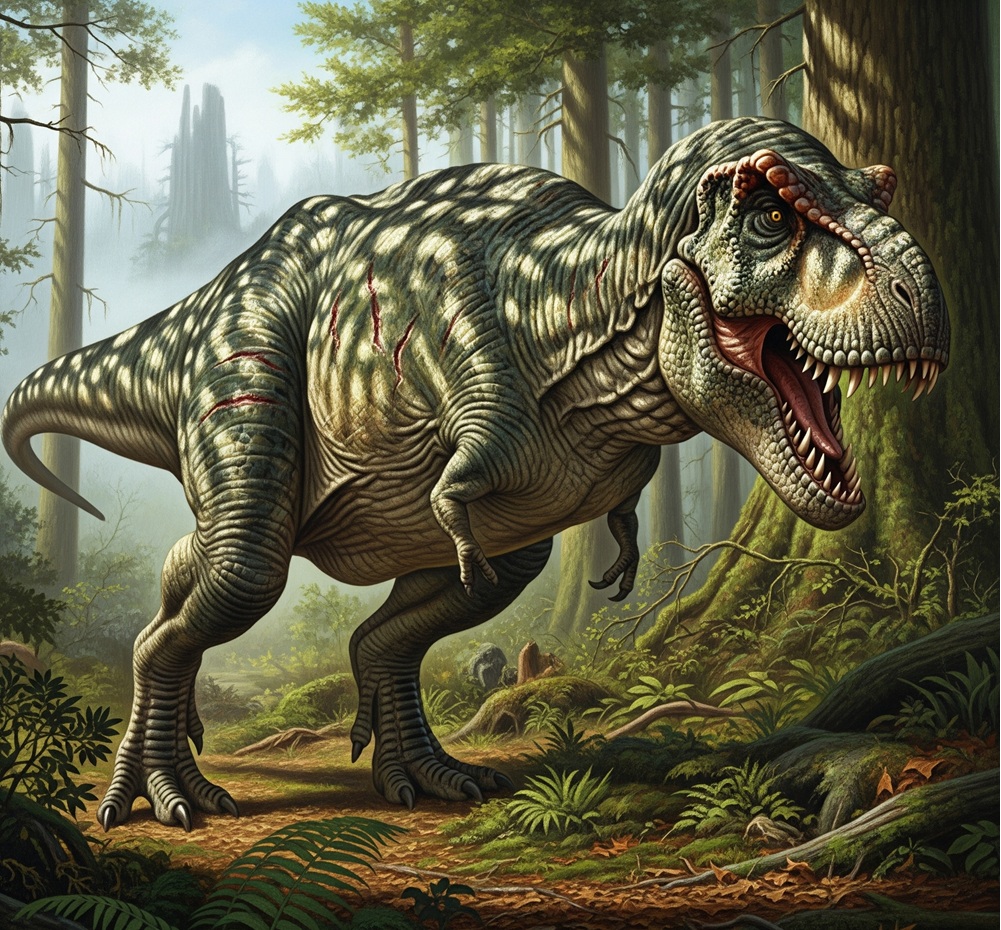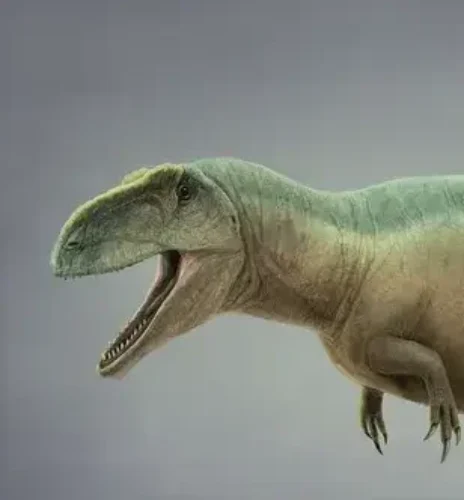The massive jaws, the bone-crushing bite, the intimidating roar—the Tyrannosaurus rex is a symbol of predatory power. But one anatomical feature has puzzled paleontologists for over a century: its comically small arms. These forelimbs, which were not much longer than a human arm, have been the subject of everything from jokes to serious scientific inquiry. While it’s easy to dismiss them as a useless evolutionary leftover, new research suggests these arms were far from vestigial, and their small size may have been a key to the dinosaur’s success.
So, why did the king of the tyrant lizards have such a peculiar set of forelimbs? The answer, as it turns out, is a fascinating story of evolutionary trade-offs.
The Early Theories: Vestigial or Functional?
For decades, the dominant theory was that the arms were simply a vestigial feature, like the human appendix. As the T. rex evolved, its head and jaws became its primary weapon, rendering the forelimbs unnecessary for hunting. This led to their proportional reduction over millions of years. However, this theory struggled to explain a key piece of evidence: the bones of these tiny arms were not weak. Instead, they were robust, with large muscle attachment points, suggesting they were incredibly strong. This led paleontologists to explore a range of potential functions.
Recent Discoveries and Scientific Theories:
The last few years have seen a surge in research and new hypotheses, moving away from a single, simple answer to a more complex, multi-faceted one.
- The “Slashing” Hypothesis: One of the most compelling recent theories was proposed by paleontologist Steven Stanley. He argues that the arms, though short, were used for a very specific and brutal purpose: slashing prey at close quarters. Stanley points to several anatomical features to support this claim, including the reduction of fingers from three to two (which would have concentrated more force into each claw), the presence of sharp, sickle-shaped claws, and a shoulder joint that would have allowed for a wide range of motion. According to his theory, a T. rex might have used its massive jaws to grab a struggling victim, then quickly inflicted deep gashes with its powerful arms, inflicting a mortal wound in a matter of seconds.
- The “Defense Against Cannibalism” Theory: Paleontologist Kevin Padian from the University of California, Berkeley, has put forward a different, equally intriguing theory. In a 2022 paper, he suggested that the arms shrank to avoid accidental or intentional amputation during “mob-feeding.” The idea is that multiple T. rexes would descend on a single carcass, and with dozens of massive heads and bone-crushing jaws in close proximity, a longer arm would have been a significant liability. By shrinking their arms, they reduced the risk of having a limb accidentally bitten off by a packmate during a chaotic feeding frenzy.
- The “Grasping” and “Wrestling” Theory: Some paleontologists, including Kenneth Carpenter, have long argued that the arms were used to hold on to struggling prey. Biomechanical analyses of the forelimbs show that they were capable of a powerful flexion, or curling motion, with the strength to lift hundreds of pounds. Carpenter’s research on healed injuries in the wishbones of T. rex suggests the forelimbs were subjected to “extraordinarily great force,” which is consistent with wrestling a large, thrashing animal. The arms could have been used to clutch a victim against the dinosaur’s body, preventing it from escaping the lethal bite of its jaws.
- A New “Dragon Prince” and an Evolutionary Trade-Off: The discovery of a new tyrannosaur species, Khankhuuluu mongoliensis, in Mongolia, has shed new light on the evolution of the group. Published in 2025, this “missing link” species had a longer snout and proportionally larger arms than a T. rex. This discovery helps to illustrate the evolutionary trend of tyrannosaurs, where a massive increase in head and jaw size seems to have coincided with the reduction of the forelimbs. The arms didn’t just get smaller for a single reason; they were part of a larger evolutionary trade-off that prioritized the skull as the primary, and most devastating, weapon.
The debate over the function of T. rex‘s arms is a perfect example of how paleontology works. It’s a field of continuous discovery, where a single bone can challenge a century of assumptions. While we may never know for certain what those tiny arms were for, the evidence points to a creature that was not only a powerful predator but also a highly specialized and biologically efficient one.
Scientific Resources:
- Padian, K. (2022). The tiny arms of Tyrannosaurus rex: An evolutionary hypothesis. Acta Palaeontologica Polonica, 67(1), 1-10. https://bioone.org/journals/acta-palaeontologica-polonica/volume-67/issue-1/app.2021.0119/The-tiny-arms-of-Tyrannosaurus-rex-An-evolutionary-hypothesis/10.4202/app.2021.0119.full
- Stanley, S. M. (2017). Evidence that the arms of Tyrannosaurus rex were not functionless but adapted for vicious slashing. Geological Society of America Abstracts with Programs, 49(6). https://gsa.confex.com/gsa/2017AM/meetingapp.cgi/Paper/297346
- Carpenter, K., & Smith, M. (2001). Forelimb function in Tyrannosaurus rex. In Mesozoic Vertebrate Life, pp. 136–161.
- Voris, J. T., et al. (2025). A new tyrannosaurid from the Late Cretaceous of Mongolia and the evolution of the tyrannosaurid family. Nature Communications, 16, 5245. https://www.nature.com/articles/s41467-025-58525-4
- Mancini, M. (2024). Why Did the T. Rex Have Such Puny Arms? HowStuffWorks. https://animals.howstuffworks.com/dinosaurs/why-did-t-rex-had-such-puny-arms.htm



